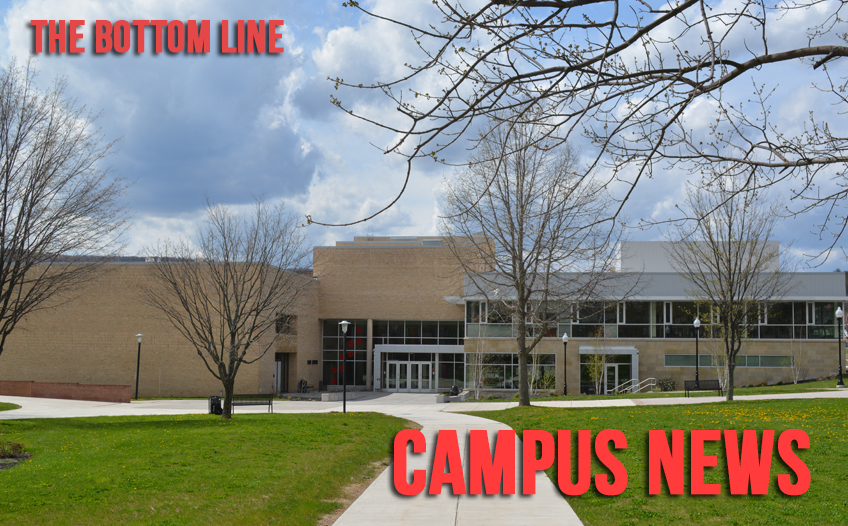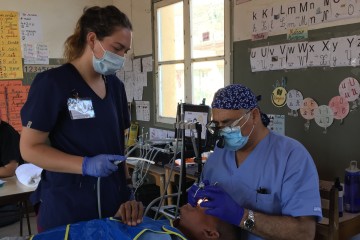Relationship Between Police and Community Discussed at Forum
On Tuesday, October 13, 2015, James J. Nolan, Ph.D. presented on police legitimacy at FSU. Nolan, an associate professor of sociology and anthropology at West Virginia University, earned his Ph.D. at Temple University and teaches topics concerning crime and social control. In addition, Nolan is a member of the executive board of WVU’s research center on violence. Nolan, who served as a police officer in Wilmington, Delaware for 13 years before teaching, is a 1992 graduate of the FBI academy where he worked as unit chief in the crime analysis research and development. Recently, Nolan completed a year-long sabbatical project, where he assisted with the development of new methods of successful policing.
Dr. Nolan’s presentation, “The Thinning of the Thin Blue Line: The Struggle for Renewed Legitimacy in American Policing,” explained how and why the thin blue line that represents order and chaos are so close in touching. He uses Wilmington, DE as a prime example throughout the presentation, and often referred the area as “Murder Town, USA.” Nolan’s purpose of the presentation was to, “[raise] some of the issues to help understand what’s going on throughout the nation.” Nolan compares crime rates to several pots of boiling water set at various temperatures. He points out, “crime is going down, longitudinally, in the United States [and] it’s not boiling over everywhere.” Some cities may have crime rates at high or low levels, but that does not mean all cities are the same.
Nolan’s experience in policing was “mind-blowing” and he mentions how it felt to “help people create a better life.” He asks three questions and gives solutions on how to build better relationships between police officers and citizens.
“Why have perceptions of police legitimacy declined in many places over the years?” he asked. After the 9/11 attacks, the view of policing changed, he said. Campaigns such as “Stop Snitching” emerged and “have had consequences.” More and more cities are facing consequences from what Nolan called “broken windows,” meaning a neighborhood with physical and social disorders. The method in keeping physical and social order in neighborhoods is to simply fix the broken window and attempt to lower crime rates.
Nolan points out the origin of policing is to keep communities safe. Unfortunately, time and again, it seems as if policing is some type of competition on who can make the most arrests.
Police officers are going to “broken windows” neighborhoods and searching for arrests. This strategy prevents communities from building positive relationships with officers, leading into an increase of negative perceptions. Nolan stressed that officers need to be able to go out in communities and be able to juggle relationship building and still be able to make perform their jobs efficiently.
Because of this, many families and communities are destroyed and there becomes a lack of trust. When there is a lack of trust, it is more often for citizens, particularly youth, do handle situations on their own – often resulting in gun violence.
To leave positive impacts and regain trust in policing, officers need to prioritize and organize in a more efficient manner, according to Nolan. He showed several charts and graphs on the areas in which officers spend most of their time. One chart, from 2010-2014, reported most of the officers’ time spent was focused on loitering and resisting arrests. Furthermore, officers need to make sure their arrest has legitimacy.
“Is there a way out and how should we think about moving forward?” he asked. In order to get off of the sticky path officers are used to walking, they must look around and search for a new path and new policing methods. Collective efficacy is a tool used to look at cities that have all of the predictors of crime and still maintains communication between citizens and officers. Citizens in these communities are able to trust one another and “are willing to intervene for the common good,” Nolan said.
A part of efficient policing is communication. Nolan asked, “Is there a way to build collective efficacy?” He strives to help officers view neighborhoods’ different dynamics. These dynamics are results from interactions with the police and are described as: strong, vulnerable, chaotic, and responsive. This involves understanding what it is the citizens expect from the police and the reactions produced from officer’s actions. The goal for officers is to build strong communities by having positive relationships and forming attainable outcomes.
The final question Nolan addressed was, “Why is it so difficult to change?” Nolan started off by saying, “The reason it’s so hard is because it doesn’t just involve police.” He compared this concept to a football game. All of the team members (officers) have to be able to work together to drive out a successful play. Police departments need to “change the game of policing,” Nolan said. “But, it’s not just the police, it’s everybody,” he said. Everyone has a position and must follow the rules of the game. Every player has to internalize these rules to make effective change.
During the question and answer discussion, many people wondered why police officers were so distant from the individuals in their communities. FSU Police Chief Cynthia Smith offered, “There’s a lack of relationships between the police and citizens because that’s not what they’re trained for.”
This left many dispirited, but Dr. Nolan suggested, “It’s difficult to implement new methods in policing. You first have to convince them there needs to be a change.”





1 Comment